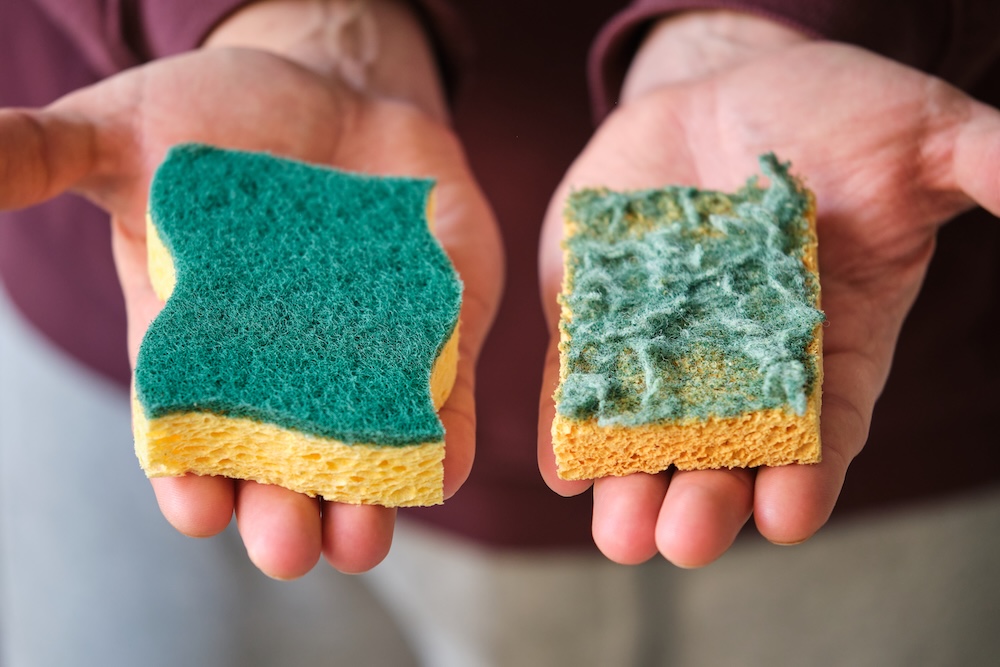Plastic: Convenient, but Not Sterile
Plastics are everywhere—storage containers, toys, toothbrushes, shower curtains, electronics, packaging. While we often assume plastic is a “clean” material, the truth is: bacteria can and do grow on plastic, even in indoor environments.
From kitchen sponges to your phone case, plastic surfaces can become breeding grounds for microbial life—especially when moisture, warmth, and nutrients are present.
Understanding how and why this happens can help you minimize health risks, improve home hygiene, and make better material choices.
How Do Bacteria Grow on Plastic?
1. Moisture + Time = Bacterial Growth
Plastics don’t absorb water, but they often trap moisture on the surface—think of wet dish racks or sealed containers. That moisture, combined with environmental microbes and organic residue (like food, skin cells, or soap scum), creates the perfect environment for biofilm to form.
2. What Is a Biofilm?
A biofilm is a thin, slimy layer of microorganisms that stick to surfaces—including plastic. Once bacteria attach, they form a protective matrix that helps them resist cleaning and survive longer.
Biofilms can develop in as little as 24–48 hours on surfaces that stay damp, such as:
- Toothbrush holders
- Shower curtains
- Sink drains
- Water bottles
- Cutting boards (especially if cracked)
3. Plastic Texture Matters
Rough, scratched, or porous plastics hold more debris and moisture, giving bacteria more hiding places. Even “smooth” plastics eventually wear down, creating micro-environments that harbor microbial growth.
Where Bacteria Commonly Grow on Plastic in Your Home
Kitchen
- Cutting boards
- Refrigerator drawers
- Plastic dish racks
- Reusable food containers and lids
- Water pitchers and filters
Bathroom
- Shower curtains
- Toothbrush holders
- Soap dispensers
- Loofahs with plastic mesh
- Toilet seats or plastic covers
Living Areas
- TV remotes
- Game controllers
- Light switches and outlet covers
- Cell phone cases
- Keyboards and plastic mousepads
Outdoors
- Plastic lawn chairs
- Garden hoses
- Children’s plastic toys
- Pool floats and accessories
Is This Dangerous?
It depends on the type of bacteria, the environment, and your immune system. Most household microbes are harmless, but under certain conditions, they can become problematic.
Common bacteria found on plastics:
- Staphylococcus aureus – linked to skin infections and resistant strains like MRSA
- Escherichia coli (E. coli) – associated with foodborne illness
- Pseudomonas aeruginosa – thrives in wet environments, can cause infections in immunocompromised individuals
- Listeria monocytogenes – survives in refrigerator temperatures, found on food storage surfaces
People with allergies, asthma, or weakened immune systems may be more affected by long-term exposure to microbial buildup.
Do Plastics Support Mold and Fungi?
Yes—plastic doesn’t prevent mold growth, it simply doesn’t feed it directly. Mold can still thrive on dust, soap residue, or organic particles that settle on plastic surfaces.
Common mold-prone plastic areas include:
- Shower curtains
- Window seals with plastic liners
- Humidifier tanks
- Plastic water filters
Cleaning Doesn’t Always Kill Everything
Many biofilms are resistant to routine cleaning. That’s why plastic surfaces that appear clean can still host invisible microbial communities. Some bacteria can even survive cleaning agents if:
- The plastic is scratched or porous
- The cleaner is too weak
- The surface is not rinsed and dried properly
Tips for Preventing Bacterial Growth on Plastic
1. Dry Thoroughly
Moisture is the main driver of growth. After washing, completely dry plastic containers, shower liners, and bathroom accessories.
2. Replace Worn or Cracked Plastic
Scratches harbor bacteria. Replace old cutting boards, plastic utensils, and containers that show wear.
3. Use Natural Sunlight
UV rays from sunlight help disinfect plastic. Let water bottles, containers, or toys dry outdoors when possible.
4. Avoid Sealed Damp Containers
Never seal wet food containers or sponges in airtight spaces. It creates a bacteria incubator.
5. Use Safer Cleaning Methods
White vinegar, hydrogen peroxide, and diluted castile soap can reduce bacteria without the harsh effects of chemical disinfectants that may harm your skin or indoor microbiome.
6. Consider Alternative Materials
Switch to glass, stainless steel, silicone, or bamboo when possible—these materials are less prone to long-term biofilm formation.
Environmental Concern: Bacteria on Plastics Outdoors
Outside the home, plastic pollution in oceans and soil hosts entire microbial ecosystems. Some of these microbes:
- Help degrade plastics (slowly)
- Carry pathogens across environments
- Alter the balance of native ecosystems
Microbial growth on plastic litter is an emerging concern in environmental science, especially as microplastics spread.
FAQs: Bacteria and Plastic
Can BPA-free plastic still grow bacteria?
Yes. BPA status has no effect on bacterial growth. It relates to chemical leaching, not microbial buildup.
Do antibacterial plastics work?
Some products claim antimicrobial properties (usually from silver additives), but over time their effectiveness decreases and they may still host biofilms.
Can I microwave plastic to kill bacteria?
Not recommended. Some plastics leach chemicals when heated, and microwaving unevenly may not fully sanitize the item.
What is the best plastic alternative for food storage?
Glass containers with silicone lids are more hygienic, dishwasher-safe, and environmentally friendly.
Final Thoughts
Plastic may seem clean and convenient—but it’s not immune to microbial life. From your kitchen to your bathroom, bacteria can quietly thrive on plastic surfaces, especially when moisture and residue are present.
Routine cleaning helps, but preventing buildup requires awareness and thoughtful product choices. Whether you’re protecting your family’s health or reducing environmental impact, it’s worth rethinking the plastic in your life.









Reader Interactions